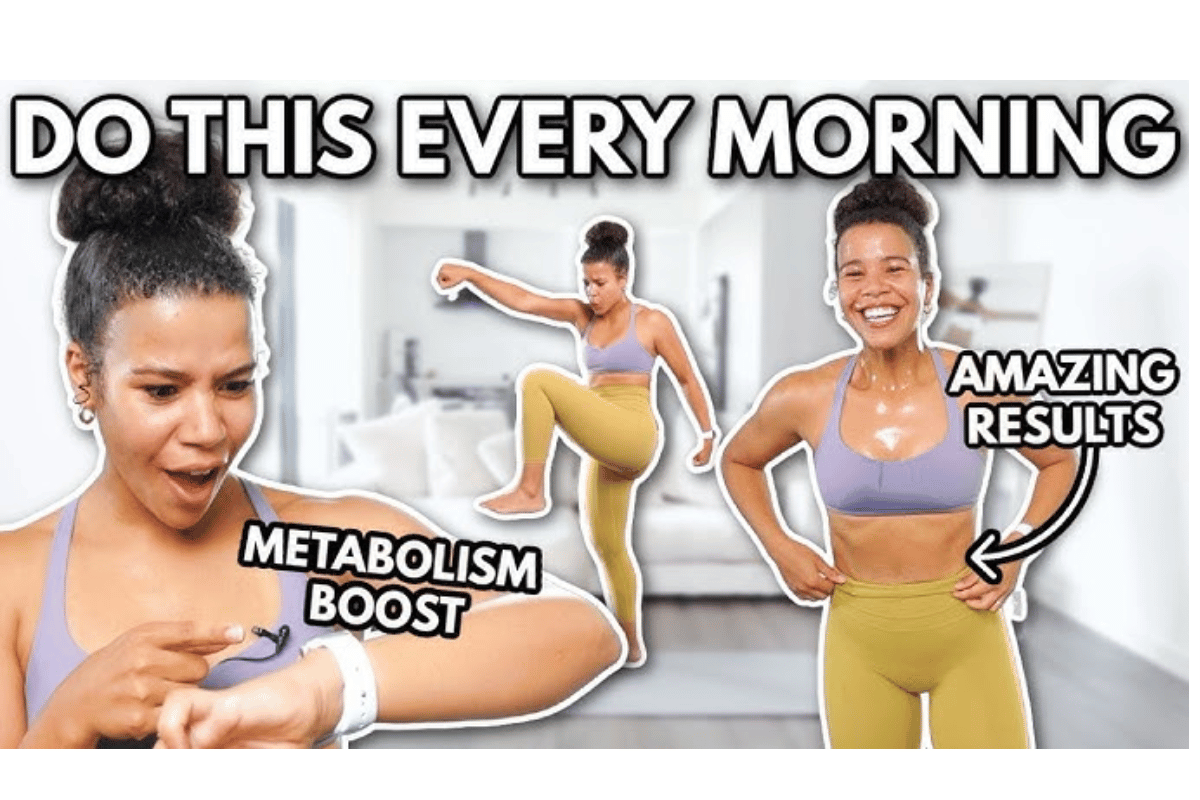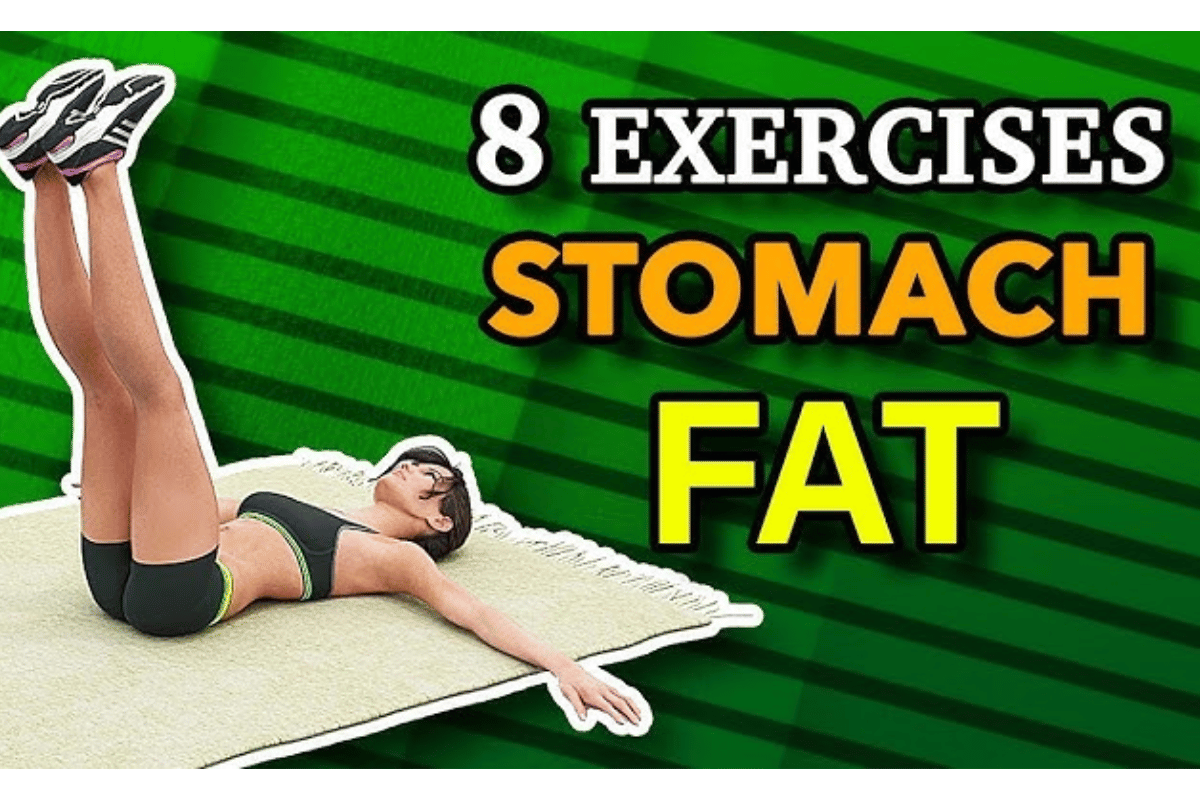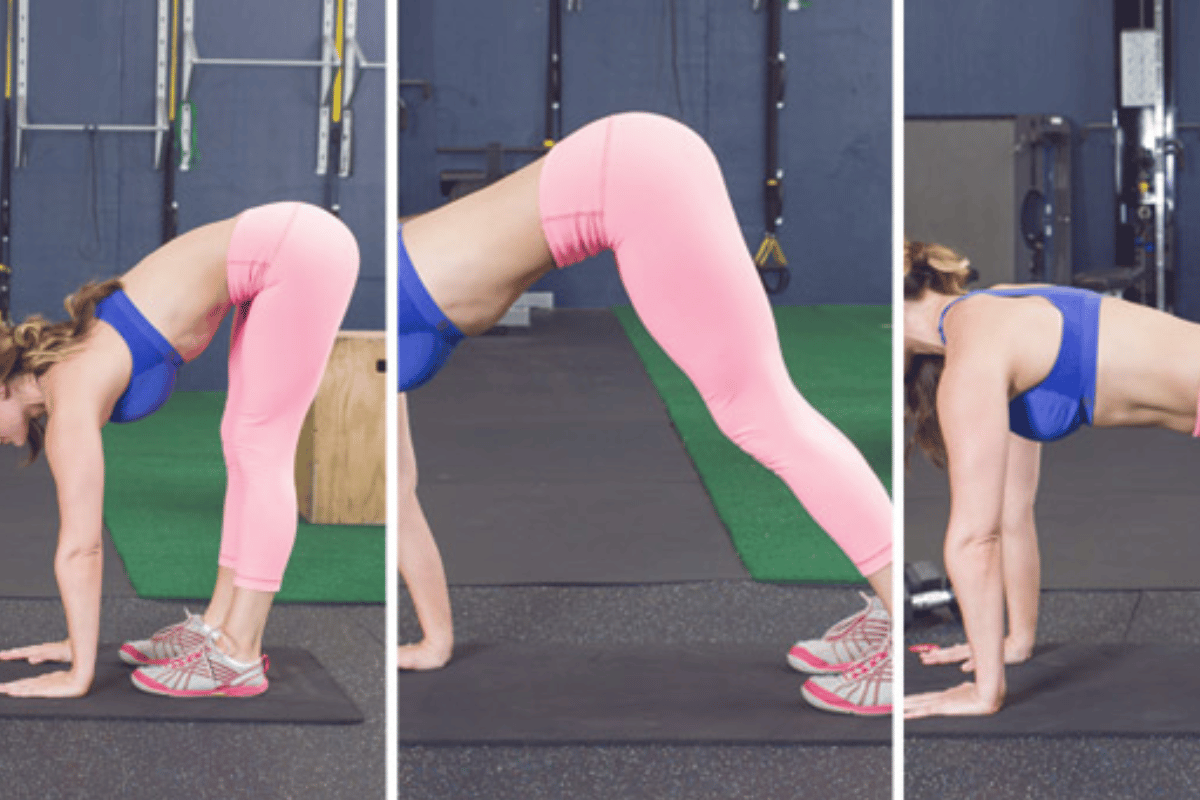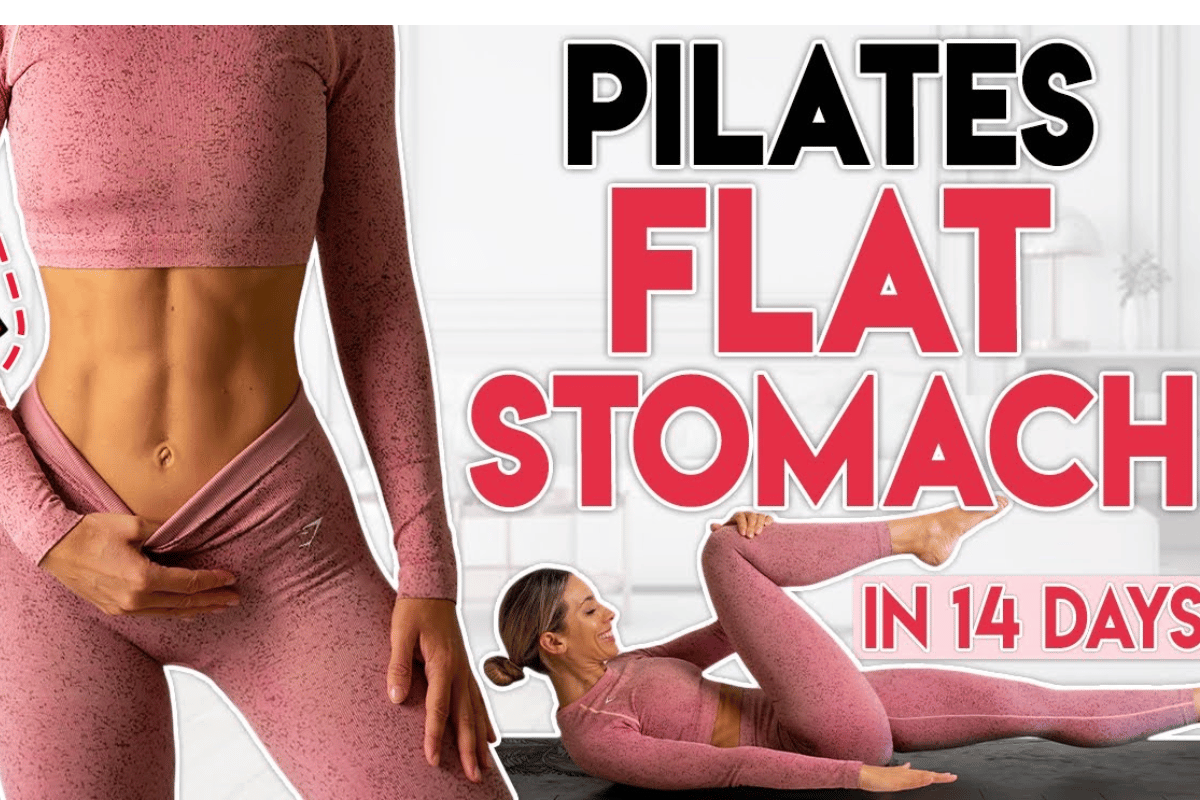As we step into 2024, many of us are determined to follow through on our New Year’s resolutions, and for some, that means saying goodbye to stubborn belly fat. In this article, we’ll explore 8 popular belly fat workouts that are making waves in 2024. From high-intensity interval training to targeted ab exercises, these workouts offer effective strategies to help you achieve your fitness goals. Say hello to a healthier, more confident you in the New Year with these belly fat-blasting routines.
In today’s health-conscious world, shedding excess belly fat is a common fitness goal for many individuals. A toned and trim midsection not only enhances one’s appearance but also contributes to overall health and well-being. As we venture into 2024, it’s essential to revisit our New Year’s resolutions and recommit to achieving our fitness objectives. In this article, we will delve into the realm of effective belly fat workouts, focusing on 8 popular methods that are garnering attention in the fitness world.

belly fat workouts
Belly fat, often referred to as visceral fat, can be stubborn and resistant to traditional weight loss approaches. However, with the right workout strategies, dedication, and a balanced diet, you can make significant strides in achieving the flat stomach you desire. These 8 belly fat workouts are not just fads; they are tried and tested methods backed by fitness experts and enthusiasts alike. Whether you’re a fitness newbie or a seasoned pro, there’s something here for everyone.
So, if you’re determined to transform your abdominal area and embrace a healthier lifestyle, keep reading. We’ll explore a variety of workout routines and provide valuable insights on how to incorporate them into your fitness journey effectively. Say goodbye to belly fat, and hello to a more confident and vibrant you in 2024.
High-Intensity Interval Training (HIIT)
When it comes to torching belly fat, High-Intensity Interval Training (HIIT) stands out as one of the most effective workout methods. HIIT is renowned for its ability to boost metabolism, burn calories, and target stubborn abdominal fat. Here’s a closer look at why HIIT is a popular choice among fitness enthusiasts:
1. Efficient Fat Burning: HIIT alternates between short bursts of high-intensity exercises and brief rest or lower-intensity periods. This intense cycle keeps your heart rate elevated and effectively burns calories during and after the workout, making it highly efficient for belly fat reduction.
2. Time-Saving: In our fast-paced lives, time is often a precious commodity. HIIT workouts are known for their brevity, as sessions typically last between 15 to 30 minutes. This makes it an excellent choice for individuals with busy schedules who still want to prioritize fitness.
3. Versatility: HIIT is adaptable to various exercises, from sprinting and cycling to bodyweight movements like burpees and jumping jacks. This versatility allows you to tailor your workout to your preferences and fitness level.
4. Afterburn Effect: HIIT triggers the “afterburn effect” or excess post-exercise oxygen consumption (EPOC), where your body continues to burn calories at an elevated rate even after you’ve finished your workout. This effect can help target that persistent belly fat.
To make the most of your HIIT routine, focus on a combination of exercises that engage your entire body, including core-specific movements. The intensity of HIIT may be challenging, so it’s crucial to start at your fitness level and gradually increase the intensity. Remember, consistency is key when using HIIT to combat belly fat.

belly fat workouts
Targeted Ab Exercises
When it comes to sculpting a defined and toned midsection, incorporating targeted ab exercises into your fitness routine is essential. These exercises focus on strengthening and toning the abdominal muscles, helping you achieve a firmer core. Here’s a breakdown of various ab exercises that can assist you in your quest to reduce belly fat:
1. Crunches: Crunches are a classic ab exercise that primarily targets the upper abdominal muscles. To perform a crunch, lie on your back with your knees bent and feet flat on the floor. Place your hands behind your head or across your chest, and lift your upper body off the ground while contracting your abs. Lower back down with control and repeat.
2. Leg Raises: Leg raises are excellent for targeting the lower abdominal muscles. Lie on your back with your legs straight. Place your hands under your hips for support. Lift your legs off the ground, keeping them straight, and then lower them back down without touching the floor.
3. Planks: Planks are renowned for their effectiveness in strengthening the entire core, including the deep-lying muscles. Start in a push-up position but with your weight resting on your forearms and toes. Keep your body in a straight line from head to heels, engaging your core muscles. Hold the plank for as long as you can while maintaining proper form.
4. Russian Twists: Russian twists engage the oblique muscles on the sides of your abdomen. Sit on the ground with your knees bent and feet flat. Lean back slightly, balancing on your sit bones. Hold a weight or medicine ball with both hands and twist your torso to one side, bringing the weight toward the ground beside your hip. Return to the center and twist to the other side.
5. Bicycle Crunches: Bicycle crunches are dynamic and work both the upper and lower abs. Lie on your back with your hands behind your head and your knees bent. Lift your head, shoulders, and upper back off the ground and bring one knee toward your chest while simultaneously twisting your torso to touch your elbow to the opposite knee. Alternate between sides in a pedaling motion.
To effectively target belly fat, it’s crucial to perform these ab exercises with proper form and control. Additionally, consider incorporating these exercises into a well-rounded workout routine that includes cardio and full-body strength training for comprehensive results.
Cardiovascular Workouts
Cardiovascular workouts are a cornerstone of any fitness routine, especially when it comes to shedding belly fat and achieving overall fat loss. Engaging in cardiovascular exercises not only helps you burn calories but also targets excess fat, including that stubborn abdominal fat. Here’s why cardio workouts are an essential component of your fitness journey:
1. Overall Fat Loss: Cardiovascular workouts, such as running, cycling, swimming, and dancing, elevate your heart rate and increase your overall calorie expenditure. This helps create a calorie deficit, which is necessary for belly fat reduction.
2. Core Engagement: Many cardio exercises engage the core muscles as stabilizers, leading to increased activation of the abdominal area. Activities like running require core strength to maintain balance and posture.
3. Duration and Intensity: The duration and intensity of your cardio workouts can be adjusted to meet your fitness level and goals. For instance, high-intensity interval training (HIIT) involves short bursts of intense cardio, making it effective for fat burning.
4. Heart Health: Cardiovascular workouts not only help with fat loss but also contribute to improved cardiovascular health. A healthy heart is essential for overall well-being.
To maximize the belly fat-burning benefits of cardiovascular workouts, aim for at least 150 minutes of moderate-intensity aerobic activity or 75 minutes of vigorous-intensity aerobic activity per week, as recommended by health guidelines. Additionally, consider incorporating core-focused exercises and interval training to enhance the effectiveness of your cardio routine. Remember, consistency is key to achieving and maintaining a flat stomach.

belly fat workouts
Yoga for Core Strengthening
Yoga is not only a practice for flexibility and relaxation but also a powerful tool for strengthening the core muscles, which can aid in reducing belly fat. Yoga offers a holistic approach to fitness by combining physical postures, breath control, and mindfulness. Here’s why incorporating yoga into your fitness routine can help you achieve a stronger and leaner midsection:
1. Core Engagement: Many yoga poses require you to engage and stabilize your core muscles. Poses like Plank, Boat Pose (Navasana), and Downward-Facing Dog (Adho Mukha Svanasana) target the abdominal area, helping to tone and strengthen it.
2. Improved Posture: Yoga emphasizes proper alignment and posture, which is essential for a flat stomach. By practicing yoga regularly, you develop better awareness of your body and learn to maintain an upright posture, reducing the appearance of a protruding belly.
3. Stress Reduction: High levels of stress can lead to the accumulation of belly fat. Yoga incorporates relaxation and meditation techniques that can help reduce stress and promote overall well-being.
4. Mind-Body Connection: Yoga encourages a strong mind-body connection, allowing you to be more in tune with your body’s signals, including hunger and fullness. This mindfulness can help prevent overeating and support healthy eating habits.
To experience the belly fat-burning benefits of yoga, consider including yoga sessions in your weekly fitness routine. Aim for a combination of poses that engage the core, along with practices that focus on deep breathing and relaxation. Yoga’s holistic approach not only contributes to a stronger core but also supports your overall health and fitness goals.
Pilates for Abdominal Toning
Pilates is a low-impact, high-intensity exercise method that places a strong emphasis on core strength, making it an excellent choice for those looking to tone and sculpt their abdominal muscles. Pilates exercises are designed to target the deep-lying muscles of the core, including the transverse abdominis and obliques, which can contribute to a flatter stomach. Here’s why Pilates is a valuable addition to your belly fat reduction journey:
1. Core Stability: Pilates is centered around developing core stability, which not only strengthens the abdominal muscles but also supports proper posture and alignment. A strong core can help reduce the appearance of a protruding belly.
2. Controlled Movements: Pilates exercises involve controlled and precise movements that require concentration and engagement of the abdominal muscles throughout the entire routine. This sustained engagement contributes to muscle endurance and definition.
3. Flexibility: Pilates exercises often incorporate stretching and flexibility training, which can help improve the overall appearance and function of the abdominal area.
4. Breath Control: Pilates emphasizes controlled breathing techniques, which can aid in reducing stress and promoting relaxation. Lowering stress levels is essential for preventing the accumulation of belly fat associated with stress.
To incorporate Pilates into your fitness routine, consider taking classes led by certified instructors or following online videos and tutorials. Whether you choose mat-based Pilates or exercises using specialized equipment like the reformer, Pilates can be adapted to your fitness level and goals. Consistency in practicing Pilates can contribute to a stronger, more toned core and a flatter stomach.

belly fat workouts
Resistance Training and Weightlifting
Resistance training and weightlifting are often associated with building muscle, but they also play a significant role in belly fat reduction. While cardio workouts are effective for burning calories, resistance training helps increase muscle mass, which can lead to a higher resting metabolic rate and more efficient fat burning. Here’s why incorporating resistance training into your fitness routine is essential for a toned midsection:
1. Muscle Building: Resistance training and weightlifting challenge your muscles, leading to hypertrophy (muscle growth). This increase in muscle mass can help you burn more calories at rest, contributing to overall fat loss, including abdominal fat.
2. Metabolism Boost: As you build more muscle, your body’s basal metabolic rate (BMR) increases. This means that you burn more calories even when you’re not exercising. More muscle mass can help counteract the natural slowdown of metabolism that occurs with age.
3. Core Engagement: Many resistance exercises require core engagement for stability and support. This includes exercises like squats, deadlifts, and overhead presses, which indirectly work the abdominal muscles while targeting other muscle groups.
4. Improved Body Composition: Resistance training not only helps with fat loss but also contributes to a more favorable body composition by increasing lean muscle mass and reducing body fat percentage.
To incorporate resistance training into your fitness routine, consider using free weights, resistance bands, or weight machines at the gym. Start with a well-rounded program that targets various muscle groups, including the core. Be sure to use proper form and gradually increase the resistance or weight as you progress. A balanced combination of cardio and resistance training can be a potent strategy for achieving a flatter stomach and improved overall fitness.
Core-Strengthening Machines and Equipment
In addition to traditional exercises, specialized machines and equipment can be valuable tools in your quest to strengthen and tone your abdominal muscles. These machines provide targeted resistance and support, making it easier to isolate and work on your core muscles effectively. Here are some core-strengthening machines and equipment worth considering:
1. Stability Ball: A stability ball, also known as a Swiss ball, can be a versatile addition to your workout routine. Exercises performed on the stability ball engage the core muscles to maintain balance and stability. Simple movements like stability ball crunches or planks can effectively target your abdominal area.
2. Ab Roller: The ab roller is a simple yet effective device designed to work the rectus abdominis, the front of your abdominal muscles. Kneel on the floor, grasp the handles of the ab roller, and roll it forward while engaging your core. Roll it back to the starting position to complete the exercise.
3. Cable Machines: Cable machines equipped with attachments like rope handles or stirrup handles can be used for a variety of core exercises. Cable crunches, cable twists, and woodchoppers are examples of movements that engage the core muscles with resistance.
4. Captain’s Chair: This piece of gym equipment consists of a padded backrest and armrests, allowing you to perform leg raises and knee raises. Captain’s chair exercises primarily target the lower abdominal muscles.
5. Medicine Ball: Medicine balls can be used for dynamic core workouts. Exercises like medicine ball slams, Russian twists, and wall throws engage the core while adding an element of resistance.
When using specialized equipment, it’s essential to follow proper form and technique to avoid injury. Start with exercises that match your fitness level and gradually progress to more challenging movements. Including these machines and equipment in your workout routine can add variety to your core-strengthening efforts, making your fitness journey both effective and enjoyable.
Dietary Strategies for Belly Fat Loss
While exercise plays a crucial role in reducing belly fat, dietary choices are equally significant. To achieve a flat stomach, it’s essential to pay attention to what you eat and how much you consume. Here are some dietary strategies to help you effectively tackle belly fat:
1. Balanced Diet: Opt for a balanced diet that includes a variety of whole foods, such as fruits, vegetables, lean proteins, whole grains, and healthy fats. Avoid or limit highly processed and sugary foods, as they can contribute to weight gain, including abdominal fat.
2. Portion Control: Be mindful of portion sizes. Even healthy foods can lead to weight gain if consumed in excessive quantities. Use smaller plates and pay attention to your body’s hunger and fullness cues.
3. Belly-Fat-Burning Foods: Incorporate foods known for their belly fat-burning properties into your diet. Examples include avocados, berries, fatty fish (like salmon), green tea, and nuts. These foods can support fat loss and overall health.
4. Hydration: Stay well-hydrated by drinking plenty of water throughout the day. Proper hydration supports metabolism and can help prevent overeating by reducing feelings of hunger.
5. Limit Alcohol Consumption: Alcohol can contribute to the accumulation of belly fat. Limit your alcohol intake, and when you do indulge, do so in moderation.
6. Watch for Hidden Sugars: Be aware of hidden sugars in foods and beverages. Read labels and choose products with lower added sugar content.
7. Fiber-Rich Foods: Foods high in dietary fiber, such as whole grains, legumes, and vegetables, can help you feel full and satisfied, reducing the likelihood of overeating.
8. Regular Meals: Avoid skipping meals, especially breakfast. Eating regular, balanced meals can help stabilize blood sugar levels and prevent cravings.
9. Mindful Eating: Practice mindful eating by savoring your meals, eating slowly, and paying attention to your food. This can help prevent overeating and promote a healthier relationship with food.
Remember that spot reduction (losing fat from a specific area) is not achievable through diet alone. However, by adopting a balanced and mindful approach to eating, you can support your overall fat loss goals, including reducing belly fat. Combine these dietary strategies with a consistent workout routine for the best results.

belly fat workouts
Consistency and Goal Setting
Consistency and goal setting are two essential aspects of any successful fitness journey, especially when it comes to achieving a flat stomach and reducing belly fat. Here’s why these factors are critical for your success:
1. Consistency: Consistency is the key to making lasting changes in your body. Regardless of the workout methods or dietary strategies you choose, it’s essential to stick to your plan over the long term. Consistency ensures that you continue to burn calories, build muscle, and make progress toward your fitness goals.
2. Goal Setting: Setting clear and achievable goals is vital for staying motivated and tracking your progress. When setting goals related to belly fat reduction, make sure they are specific, measurable, and time-bound. For example, you could aim to lose a certain number of inches around your waist within a specific timeframe.
3. Celebrating Small Victories: Along your fitness journey, celebrate small victories and milestones. Whether it’s completing a challenging workout, making healthier food choices, or seeing progress in your measurements, acknowledging your achievements can boost your motivation.
4. Tracking Progress: Keep track of your workouts, dietary choices, and changes in your body composition. Tracking your progress helps you stay accountable and make adjustments to your plan if needed.
5. Adaptability: Be adaptable and willing to make changes to your fitness routine or diet as necessary. If you encounter challenges or plateaus, don’t get discouraged. Seek advice from fitness professionals or registered dietitians to help you navigate obstacles.
6. Patience: Achieving a flat stomach and reducing belly fat takes time and dedication. Be patient with yourself and understand that results may not be immediate. Consistent effort will pay off in the long run.
7. Support and Accountability: Consider seeking support from friends, family, or a fitness buddy. Having someone to share your goals and progress with can provide encouragement and accountability.
In conclusion, consistency and goal setting are the pillars of success when it comes to reducing belly fat and achieving your fitness aspirations. Stay committed to your plan, celebrate your achievements, and keep your eye on the prize—a healthier and more confident you with a toned midsection.
belly fat workouts
FAQs – Belly Fat Workouts and Achieving a Flat Stomach
Q1: Can I spot-reduce belly fat with specific exercises?
A1: Spot reduction is a common misconception. While targeted exercises can strengthen and tone the abdominal muscles, they won’t solely reduce belly fat. A combination of overall fat loss through diet and exercise is necessary to achieve a flatter stomach.
Q2: How often should I do belly fat workouts?
A2: The frequency of your workouts depends on your fitness level and goals. Aim for at least 150 minutes of moderate-intensity aerobic activity or 75 minutes of vigorous-intensity aerobic activity per week, along with strength training exercises at least two days a week.
Q3: Are there dietary supplements that can help with belly fat loss?
A3: While some dietary supplements claim to aid in weight loss, it’s essential to be cautious and consult with a healthcare professional before using them. Focus on a balanced diet and exercise as the primary means of achieving your fitness goals.
Q4: How long does it take to see results in reducing belly fat?
A4: The timeline for seeing results varies from person to person. It depends on factors like your starting point, the intensity of your workouts, and your dietary choices. Consistency is key, and it may take several weeks or months to achieve noticeable changes.
Q5: Are there specific foods that target belly fat?
A5: Certain foods, such as avocados, berries, fatty fish, and green tea, are associated with promoting fat loss. However, no single food will directly target belly fat. A balanced diet and portion control are crucial.
Q6: Can I achieve a flat stomach without exercise?
A6: While diet plays a significant role in fat loss, exercise is essential for strengthening and toning abdominal muscles, improving overall fitness, and supporting long-term weight management. Combining both exercise and a balanced diet is the most effective approach.
Q7: Is it safe to do high-intensity workouts if I’m a beginner?
A7: It’s essential to start at your fitness level and gradually progress. High-intensity workouts can be challenging, so consult with a fitness professional or healthcare provider if you’re new to intense exercise.
Q8: What should I do if I hit a plateau in my progress?
A8: Plateaus are common in fitness. Consider modifying your workouts, adjusting your diet, or seeking guidance from a fitness expert or registered dietitian. Sometimes, small changes can reignite your progress.
Q9: Can stress contribute to belly fat accumulation?
A9: Yes, chronic stress can lead to the accumulation of visceral fat, including belly fat. Managing stress through relaxation techniques, mindfulness, and regular exercise can be beneficial for both mental and physical health.
Q10: Are there age-related factors that affect belly fat loss?
A10: Metabolism naturally slows with age, which can make it more challenging to lose belly fat. However, maintaining an active lifestyle and a balanced diet can help counteract age-related changes and support a healthy weight.